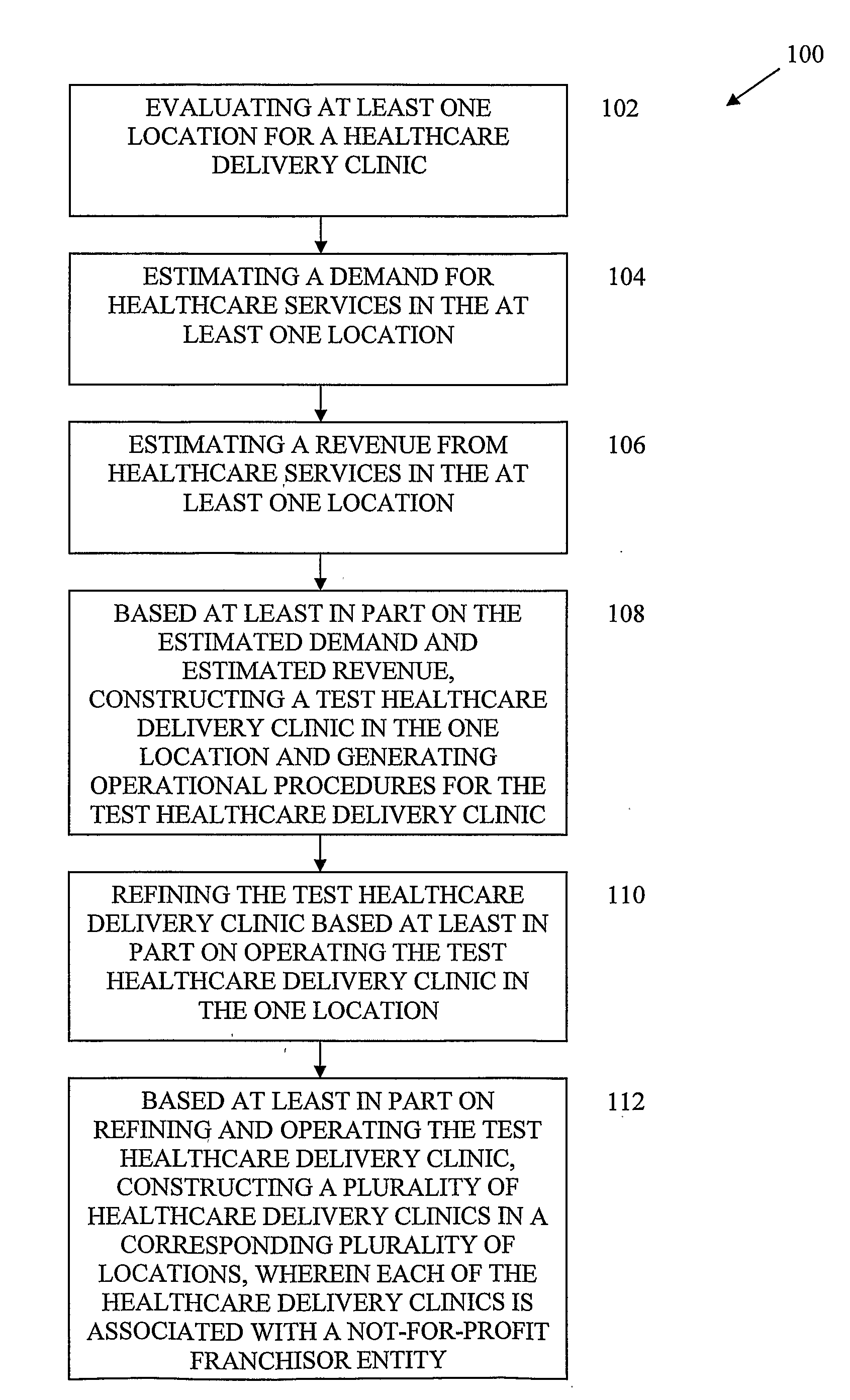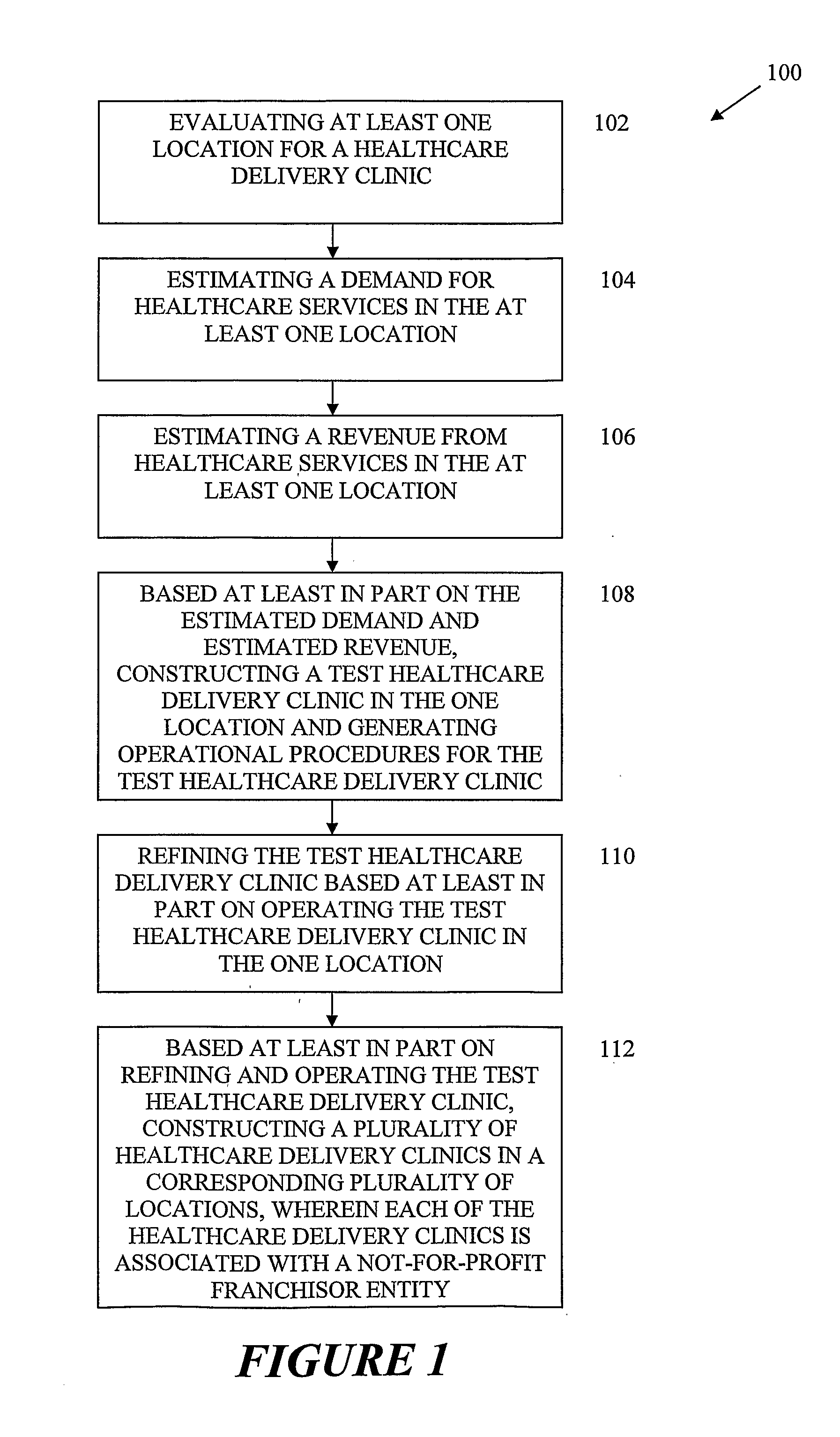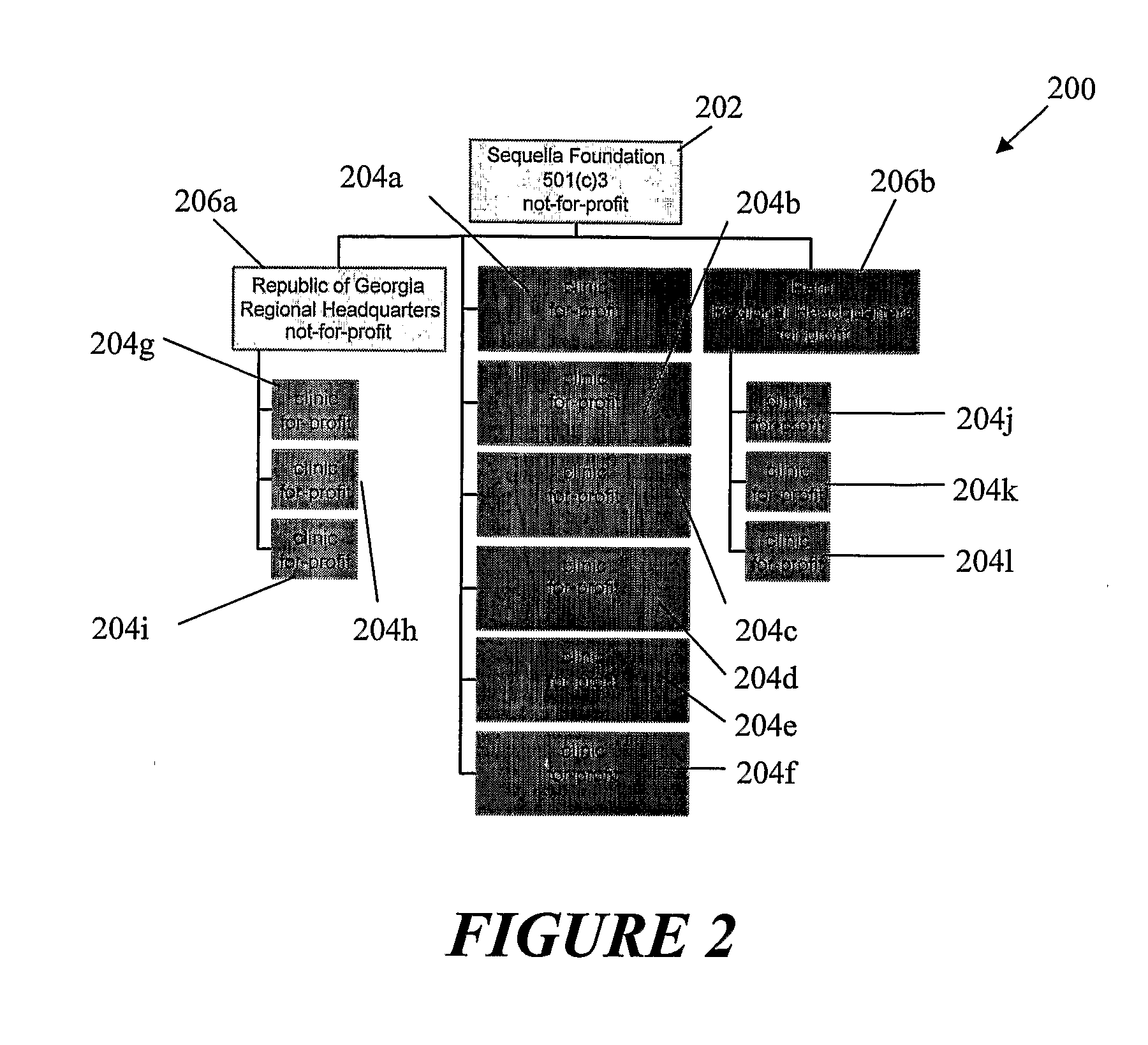Infectious disease healthcare delivery systems and methods
a technology for infectious diseases and healthcare delivery, applied in the field of health care, can solve the problems of inability to deliver appropriate healthcare in a timely and efficient manner, difficult distribution of new and more effective treatments, and lack of effective, etc., and achieve the effects of expanding and improving healthcare delivery, simple infrastructure, and large degree of autonomy
- Summary
- Abstract
- Description
- Claims
- Application Information
AI Technical Summary
Benefits of technology
Problems solved by technology
Method used
Image
Examples
Embodiment Construction
[0065]Referring now to the drawings in which like numerals indicate like elements throughout the several figures, FIG. 1 illustrates a process for providing an infectious disease healthcare delivery system in accordance with an embodiment of the invention. In particular, the process 100 shown illustrates particular elements for designing, developing, and refining an infectious disease healthcare delivery system in accordance with an embodiment of the invention. In other embodiments of the invention, the process of FIG. 1 may not be limited to delivery of healthcare for infectious diseases, but may also relate to delivery of healthcare for one or more healthcare needs including, but not limited to, family care, birth control, and treatment of a particular infectious disease. One skilled in the art will recognize the applicability of processes and associated systems disclosed herein to the delivery of healthcare and related healthcare services to any healthcare need, including those d...
PUM
 Login to View More
Login to View More Abstract
Description
Claims
Application Information
 Login to View More
Login to View More - R&D
- Intellectual Property
- Life Sciences
- Materials
- Tech Scout
- Unparalleled Data Quality
- Higher Quality Content
- 60% Fewer Hallucinations
Browse by: Latest US Patents, China's latest patents, Technical Efficacy Thesaurus, Application Domain, Technology Topic, Popular Technical Reports.
© 2025 PatSnap. All rights reserved.Legal|Privacy policy|Modern Slavery Act Transparency Statement|Sitemap|About US| Contact US: help@patsnap.com



